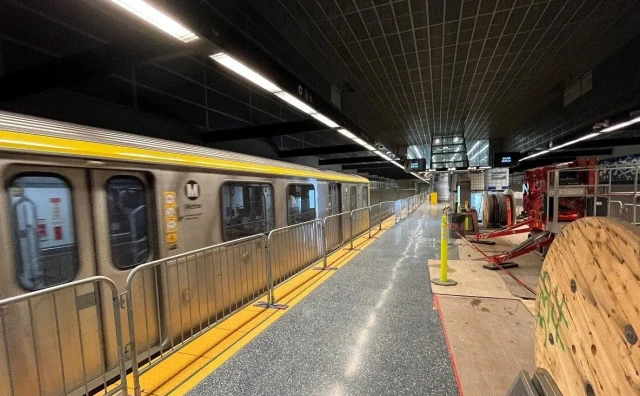With our free press under threat and federal funding for public media gone, your support matters more than ever. Help keep the LAist newsroom strong, become a monthly member or increase your support today during our fall member drive.
San Andreas fault might be stronger than we thought, new study suggests

The San Andreas fault is already the biggest, baddest earthquake threat in the region, but new research from Caltech suggests it might be even more dangerous than we thought.
The study, published Thursday in the journal Science, suggests that the amount of energy stored in the fault might go beyond what traditional quake models would predict.
An earthquake happens when two massive plates of earth’s crust rub against each other and get stuck. As they try to push past each other, they build up tension until finally they snap and release a whole lot of shaking.
Deeper in the earth it’s much hotter, so the plates aren't as solid and strong and don't stick with the same force. They can lock up for a short time, but before long the pressure is too much and they release their energy with tiny quakes in a phenomenon known as microseismicity.
Caltech researcher Nadia Lapusta says that’s what we see happening regularly on stretches of the San Andreas fault north of Southern California.
But when you look at sections running through the Mojave Desert and Coachella Valley, she says, "the fault is just silent ... and so you have to ask why?"
Using computer models and data from real quakes, Lapusta and her co-author, Junle Jiang, developed a theory to explain this eerie absence of small quakes.
They hypothesize that the stiff, strong portion of the plates that locks up is much deeper in those areas, extending down to the zone where micro-quakes tend to occur.
If that's true, then more stress could be building up, leading to potentially larger quakes once the fault ruptures.
Researchers currently think the portion of the fault running through Southern California is capable of about a magnitude 8 quake. Lapusta thinks even under this new model that wouldn't change dramatically.
"Under no circumstances does this imply going from a magnitude 8 to a magnitude 9," she explained.
However, she thinks it could mean slightly stronger quakes that rupture across a longer stretch of the fault, causing more damage to more areas nearby.
More research needs to be done to see exactly how much stronger the fault would be in specific areas.
Still, it's another good reminder that Southern California is living with a ticking time bomb in its backyard. Time to make sure that quake kit is ready.
At LAist, we believe in journalism without censorship and the right of a free press to speak truth to those in power. Our hard-hitting watchdog reporting on local government, climate, and the ongoing housing and homelessness crisis is trustworthy, independent and freely accessible to everyone thanks to the support of readers like you.
But the game has changed: Congress voted to eliminate funding for public media across the country. Here at LAist that means a loss of $1.7 million in our budget every year. We want to assure you that despite growing threats to free press and free speech, LAist will remain a voice you know and trust. Speaking frankly, the amount of reader support we receive will help determine how strong of a newsroom we are going forward to cover the important news in our community.
We’re asking you to stand up for independent reporting that will not be silenced. With more individuals like you supporting this public service, we can continue to provide essential coverage for Southern Californians that you can’t find anywhere else. Become a monthly member today to help sustain this mission.
Thank you for your generous support and belief in the value of independent news.

-
Kevin Lacy has an obsession with documenting California’s forgotten and decaying places.
-
Restaurants share resources in the food hall in West Adams as Los Angeles reckons with increasing restaurant closures.
-
It will be the second national day of protest against President Donald Trump.
-
The university says the compact, as the Trump administration called it, could undermine free inquiry and academic excellence.
-
This is the one time you can do this legally!
-
Metro officials said it will be able to announce an opening date “soon.”







